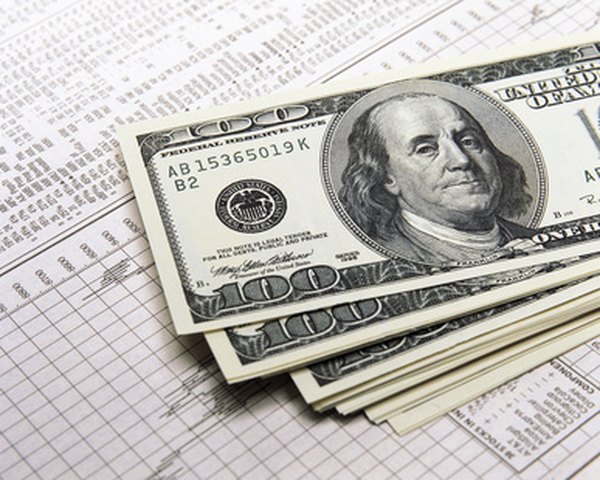The Disadvantages of Dividend Reinvestment
Income from dividend stocks can add up.
dollars image by peter Hires Images from Fotolia.com
Investing in stock can provide you not only with profits over time but also an ongoing source of income. Income from stock comes in the form of dividends, which some companies pay their investors. One option for investors is to reinvest their dividends to buy more stock. However, this can have disadvantages compared to other uses of dividends.
How Dividends Work
Dividends are payments that a company makes to its stockholders. Dividends are issued whether a stock value rises or falls, unless the board of directors votes to change the dividend or eliminate it altogether. A company can offer dividends in the form of more stock or in the form of cash. Cash dividends can be reinvested, usually through an automatic dividend reinvestment plan that uses dividends to buy partial shares at their current price when the dividend is issued.
Investing Without Planning
One of the disadvantages of dividend reinvestment is that it often happens automatically or with little thought given to the process. A dividend reinvestment plan will buy more shares without you needing to take any action. This will happen regardless of whether the stock price is high or low. It requires no planning but also has none of the benefits of carefully timed investing. Receiving dividends as cash and using them to buy at a more opportune time, based on your own research and planning, may be a better option.
Opportunity Cost
Dividend reinvestment also represents an opportunity cost since the money that is reinvested can't be spent elsewhere. Dividends from stock can provide income for living expenses, help fund an early retirement or give you money to set aside for a major upcoming expense. None of this is possible with dividend reinvestment. Instead, to pay for something else, you'll first need to sell shares of stock that were purchased with dividends. If the share price has fallen since they were purchased, you'll receive less than if you'd taken a cash dividend.
Weighing the Decision
Despite the drawbacks, dividend reinvestment can be a valuable tool for investors. It requires little planning and costs nothing, other than the opportunity cost of the dividends. Over time, dividend reinvestment can result in new shares, which pay their own dividends. As a long-term investment, stock is often one of the best places to invest dividends. However, if you need the money soon, taking a cash dividend instead of reinvesting may be your best option.

